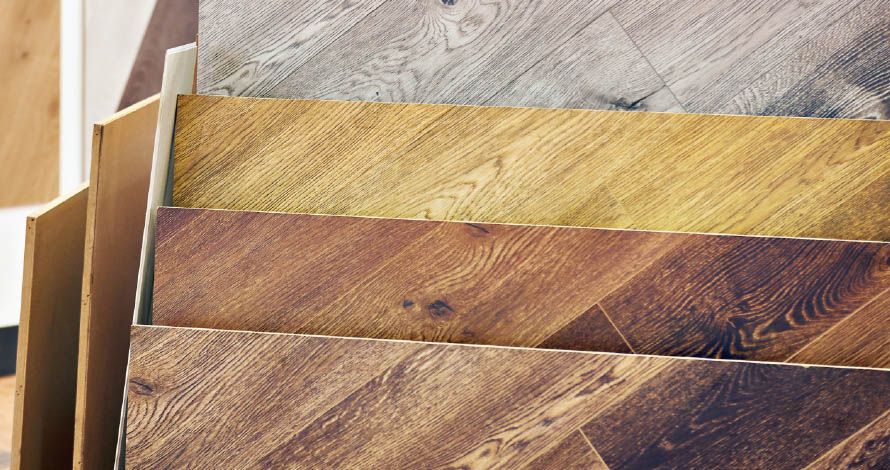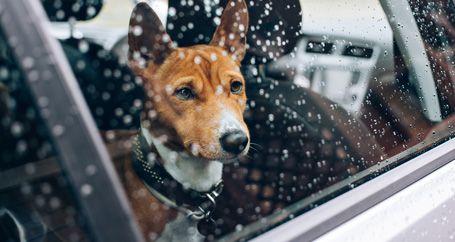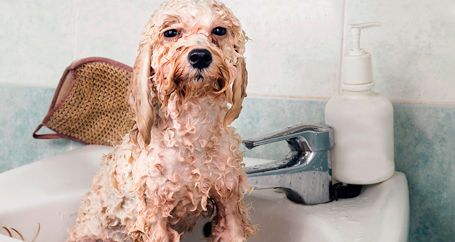When Dr. Lisa Aumiller got a house call to a two-bedroom condo in New Jersey, she knew the family she was visiting might have to split up or make a drastic change to their living arrangement. Aumiller, a veterinarian who spends her days in a mobile veterinarian clinic, had been called in by the homeowners to mediate a territorial standoff between the residents: four domestic shorthair cats.
A male cat had been harassing one of the females, who sought permanent shelter atop a kitchen cabinet. The owners had been forced to sequester the aggressive cat in a bedroom. "It's like if you don't like someone and you have to see their face all the time," Aumiller says of the cat's territorial issue. "Can you imagine if you had to stay in your house with someone you didn't like?"
Instead of removing a cat from the home, Aumiller, a veterinarian of 18 years and owner of four cats and four dogs, recommended a relatively simple, inexpensive and pet-friendly home renovation: building perches on windows and adding shelves to walls. These minor improvements gave the cats better views (to improve visual stimulation) and elevated routes, which allowed the cats to bypass each other. The territorial fighting stopped almost immediately, Aumiller says.

Whether it's a simple modification or a major plumbing and construction project, Aumiller often recommends home improvements that can make pets’ (and pet owners’) lives a little easier.
Before starting a pet-focused home renovation or improvement project, Therese DuBravac, a design consultant at a Portland, Washington, remodeling firm that regularly tackles pet renovations, recommends homeowners take a strategic look at how a pet's preferences or limitations might conflict with the layout of a home.
Here, DuBravac and other pet design specialists offer remodeling solutions for some of the most common pet issues.

In one survey, 81 percent of homeowners said pets played a role in home-buying decisions. - National Association of Realtors
Helping Indoor/Outdoor Pets Stay Clean
One of DuBravac's clients installed a dedicated dog shower to curb muddy post-walk prints all over the house — a common problem in rainy Portland. "She wanted an area in the mudroom where she could hose them down," says DuBravac, who designed a step-in shower with a half-wall enclosure that allowed her client to spray the dogs from overhead. Climate will have a big impact on where a pet bathing area should be installed. Outdoor tubs or showers located near entry/exit doors will work in warmer climates, says Nicole Mirabelli, an architect for a Florida-based firm specializing in animal shelter design. "But if you're bathing a Great Dane during a New Jersey winter, you need a tub inside to clean them."
How to Design a Pet Cleaning Station
Material
Opt for water-resistant and durable porcelain tile or stainless steel for pet shower/tub surfaces.
Design
Consider the pet's size and mobility. If the pet can't navigate stairs or may eventually have hip issues, avoid an elevated or stepped cleaning station unless the pet is small enough to easily pick up and place inside the tub.
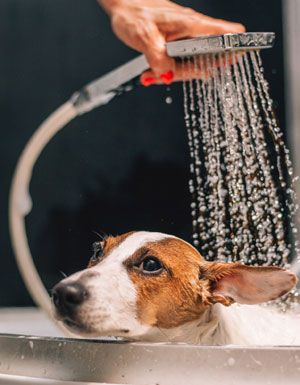
How to Design a Pet Cleaning Station
Material
Opt for water-resistant and durable porcelain tile or stainless steel for pet shower/tub surfaces.
Design
Consider the pet's size and mobility. If the pet can't navigate stairs or may eventually have hip issues, avoid an elevated or stepped cleaning station unless the pet is small enough to easily pick up and place inside the tub.

Resale
A full stainless-steel grooming tub might work for pet owners living in their "forever" home, but DuBravac advises homeowners to think about resale value and appeal when designing or building a pet-specific home feature, particularly if you plan to move in the next five years. Case in point: DuBravac installed a dog shower in a client’s home, and when they sold the house a year later, the new homeowners contacted DuBravac to remove it.
Minimizing Damage From Muddy Paws, Sharp Claws
Depending on the scale of the project, pet owners should look at all surfaces that pets come into regular contact with (whether they have permission or not), and select pet-friendly construction materials, says Mirabelli. This includes countertops, flooring and drywall. "Finish, durability and the ability to sanitize are the most important features."
Designing To Protect A Home and Pet Health
With resale value in mind, DuBravac says home modifications designed to accommodate a pet should be multifunctional. In a kitchen she designed, the homeowners wanted an extra set of slide-out cabinets next to the trash bins for bulk pet food storage. If a new family moves in, the cabinets can be used for kitchen storage. Adaptable pet home improvements also enable homeowners to repurpose a custom feature as household needs or a pet's health change.
Easy-to-access, but discreetly hidden cat litter box zones top the list of home improvements DuBravac's cat owners ask for. Homeowner Holly Guglielmo converted a small entryway closet into a mudroom bench with a low archway cut into it — a convenient solution to keep her three-legged cat Moody's litter box out of sight and arm's reach of her active two-year-old son. Guglielmo and her husband eyeballed the size of the entry cut-out to ensure Moody could comfortably access the space.
Aumiller notes another common pet health problem solved with smart pet home design: dog-proofing cat food bowls. High-protein cat foods can cause major gastrointestinal issues for dogs. DuBravac has been called in to design custom, cat-sized entryways in the door of a pantry or closet lined with rubber material (for easy cleaning) to keep food out of reach for large dogs and maintain a stress-free dining experience for cats. "It was kind of fun to rethink something as basic as a cat door," says DuBravac.

Letting Indoor Cats Experience the Outdoors
With indoor cats, a lack of mental or physical stimulation can contribute to health issues like obesity and destructive behaviors caused by anxiety and boredom. Aumiller recommends creating a safe, enclosed space for cats to experience the outdoors — what cat enthusiasts call a "catio" (cat patio), which cats can access through an exterior door or window.
Whether you're building a custom catio or assembling from a ready-made kit, Cynthia Chomos, a general contractor and catio designer, recommends cedar for its durability and an escape-proof 16- or 14-gauge galvanized (rust-proof) welded wire with 2 inch by 3 inchor smaller holes. She warns against using chicken wire, which won't protect a cat from outdoor predators or other cats and dogs and isn't very durable.
Cat recreation area tips
- Catios should have a human entrance in case of an emergency.
- Chomos recommends taping the entrance open to allow a cat to explore the new space and acclimate slowly.
- Avoid keeping cat food in a cat patio; it attracts bugs and other animals.
$72.13 Billion
The estimated amount Americans spent on pets in 2018.
- American Pet Products Association
Providing Extra TLC for Anxious Dogs
Sensory overstimulation — too many things happening at once, the sound of fireworks or thunder, the sight of other dogs or cats — is an issue for some dogs that can lead to destructive or disruptive behavior, says Aumiller. These home improvements and modifications can help an anxious dog stay calm.
Set windows facing a street higher than the dog's standing sight-line or cover existing windows with blinds a dog can't easily move aside, like plantation shutters, says Mirabelli. "In shelters, we stagger the kennels a few feet apart so dogs can't see each other, which can make them nervous," says Mirabelli, who owns two special needs dogs.

Set windows facing a street higher than the dog's standing sight-line or cover existing windows with blinds a dog can't easily move aside, like plantation shutters, says Mirabelli. "In shelters, we stagger the kennels a few feet apart so dogs can't see each other, which can make them nervous," says Mirabelli, who owns two special needs dogs.

Owners of one-third of the 70 million dogs in the U.S. reported that fear of loud noises is a problem their pet, according to a study conducted by animal health company Zoetis. A closet or laundry room retrofitted with sound-buffering acoustical cotton panels offer noise-sensitive pets a quiet oasis during thunderstorms and fireworks season.
In a small space, panels spaced a few inches apart on the wall to allow for noise absorption can reduce noise by about 30 percent. Cotton panels cost approximately $240 for a four-pack of 2 feet by 2 feet panels. Acoustic tiles made of polyester can be applied directly to a ceiling and cost approximately $2 per square foot.
Hard surfaces in a home, such as wood or tile floors, also increase reverberation noise. Laura Badraun, an architect intern who works with Mirabelli, tore out her own carpets and put down rugs for her black lab.

Making Life Easier for Aging Pets
When Makenzie Smith's pet, a Great Dane named Magnum, could no longer walk stairs to the second floor of her childhood home, her parents relocated their own bedroom downstairs to the living room. Finding ways to accommodate an aging pet doesn’t have to be so extreme, she says. A few things to keep in mind:
Heated floors (about $6/square foot) can ease the aches and relax muscles in geriatric pets with arthritis and joint issues, according to Mirabelli, who installed them in areas with tile for her own arthritic dogs, a Maltese and a Yorkie. "Heated floors are great for any pet — and they're also great for your electric bill," adds Aumiller, who recommends tackling this project when replacing old flooring.
Dimensions for Pet Stairs and Ramps
For pets with mobility problems, Mirabelli recommends ramps and steps specially-sized to the animal's gait. She wrapped her own steps in memory foam, in case one of her five-pound dogs slips and falls. Ramps should be tall enough to reach a sofa or bed, and depending on the pet’s agility, with an incline angle of 16 degrees (easy), 22 degrees (standard) or 26 degrees (for pets that can climb).
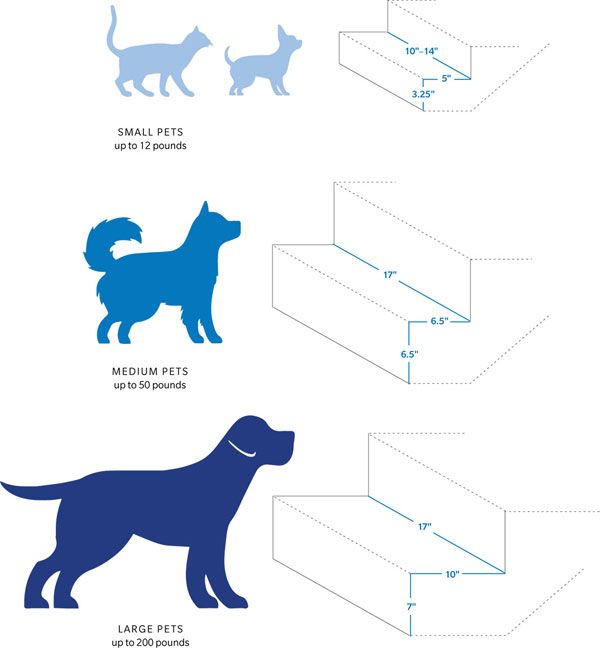
Written by
The information contained in this page is provided for general informational purposes only. The information is provided by Farmers® and while we endeavor to keep the information up to date and correct, we make no representations or warranties of any kind, express or implied, about the completeness, accuracy, reliability, suitability or availability with respect to this article or the information, products, services or related graphics, if any, contained in this article for any purpose. The information is not meant as professional or expert advice, and any reliance you place on such information is therefore strictly at your own risk.
Related articles






